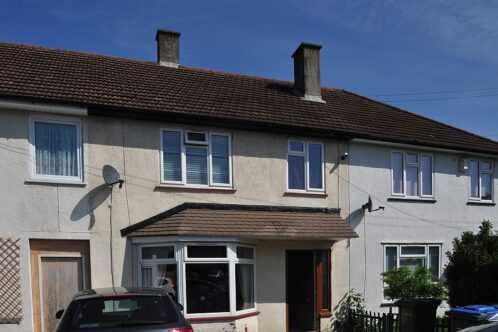How To Make A Concrete House Mortgageable?
How to make a concrete house Mortgageable? In this short blog, we’ll consider whether you can get a mortgage on a concrete house and your options. Concrete houses are classified as non-standard constructions, making getting a mortgage difficult but not impossible.
Can I get a mortgage on a concrete construction property?
Yes, getting a mortgage on a concrete construction property is undoubtedly possible.
Different mortgage lenders will have other criteria for granting a mortgage on a concrete construction property, and this is why specialist mortgage brokers are usually required in this type of situation, as they will have experience with the kind of mortgage lenders who may be willing to lend him based on your property specifications.
Most mortgage lenders will view concrete construction homes as unreliable security since they can’t be sure they can sell them and get their mortgage back without costing too much.
Some concrete building properties will also be difficult to value due to their unique elements, style, or structural framework.
When considering whether to offer a mortgage on a particular property, the primary issue for mortgage lenders will be their ability to repossess that property and sell it without significant loss.
In most cases, you will have to put down a more extensive mortgage deposit to obtain a mortgage on a particular house.
You can also expect to pay a higher mortgage rate on your mortgage, even with the larger mortgage deposit you’ve put down, which should naturally reduce the mortgage lenders’ value rate and, therefore, the interest rate. That is charged on your mortgage.
Mortgages on concrete houses may also not be competitive, as there may not be too many mortgage lenders offering mortgages on concrete houses.
In short, obtaining a mortgage on a particular home is possible if you can meet the mortgage lender’s eligibility requirements.
How To Make A Concrete House Mortgageable?
The most common way to do this is to have repair or refurbishment work on the property. Penders generally view PRC properties that have had essential improvements completed more favorably, so you may find it easier to get a mortgage.
Currently, just three lenders – Together, United Trust Bank, and Norton Home Loans – consider applications for non-refurbished concrete properties.
Which lenders will consider these mortgages?
Lenders are generally not as interested in offering mortgages on concrete-built homes as for standard brick-and-mortar properties. This is mainly due to the reasons described above. However, a few significant providers will still consider your application.
TSB, United Trust Bank, Nationwide, and Virgin Money, among others, consider applications in at least some specific property types. The fees are also not unreasonable. For example, Nationwide offers a 2.49% fixed for five years with a 10% minimum deposit.
Instead of approaching a lender directly, however, the smart move is to speak with an experienced broker first. They will be able to identify the right lender to meet your specific needs (deposit size, property type, etc.) and guide you through the application process.
What affects your eligibility to obtain a mortgage on a concrete house?
Type of deposit
The mortgage deposit you put down will significantly impact whether you can get a mortgage on a particular house. Most mortgage lenders will want a more extensive mortgage deposit to lower your mortgage loan-to-value rates and, therefore, your risk.
Kind of property
Most non-standard construction mortgage lenders will offer you mortgages with income multiples of around 4.
You will still need to prove the affordability of your mortgage to the mortgage lender and show that you can keep up with your monthly mortgage payments.
If you are self-employed
If you’re a self-employed borrower, you may be able to get a mortgage on a particular home. Still, you may find that the mortgage lender may put too much scrutiny on the reliability of your income. You may need a specialized mortgage lender if you are self-employed, and a technical mortgage broker can help you.
Your age
If you are 75 by the time the mortgage term ends, then you may find that your options for mortgage lenders may also decrease. This is because mortgage lenders prefer to lend to borrowers who will be younger than 75 by the time their mortgage term comes to an end.
Your credit history is also essential; if you have bad credit, you may find it hard to get a mortgage on a concrete house.
Find mortgage lenders willing to give you a mortgage on a concrete house with bad credit. You may have to put down a more extensive mortgage deposit and still pay a high mortgage rate.
Why is getting a mortgage on a concrete house hard?
Getting a mortgage on a concrete house may be much more complicated due to the mortgage lenders’ unwillingness to risk some of their funds on a tangible property which they may not be able to sell if they have to repossess the property.
There are many concrete homes in the U.K., and this is due to the affordable housing crisis in the U.K. back in the 1950s, which forced builders to create precast reinforced homes in a bid to increase the number of homes available after the Second World War so the returning soldiers and their families would have affordable homes to live in.
Less than 35 years later, many problems started to arise with the concrete homes built. Many found that the steel structures of their concrete homes were slowly eroding, and their structural integrity was gone.
Due to these structural issues, many mortgage lenders decided to limit their lending to concrete properties. They raised their property survey requirements for structural checks on concrete homes and mortgage deposit requirements.
Many mortgage lenders did not see precast reinforced homes built with concrete as suitable security for a mortgage.
In this period, many concrete homes would have received structural repairs, and you may find it easier to get a mortgage on a concrete house with some repairs history.
Types of concrete construction methods
Prefabricated reinforced Construction isn’t the only method used to build with concrete; there are other construction methods that have been used in the past and are some form of prefabricated concrete Construction. They include:
Wimpey No-fines
Wimpey No Fines is a concrete construction method used to mass-produce many homes under the Ministry of Works post-World War II Emergency Factory Made program.
The mortgage lender may classify Wimpey No-fines construction homes as a higher risk. However, you can find specialist mortgage lenders who will lend to you on a Wimpey No fine property. You can expect to pay a more extensive mortgage deposit.
Cornish Units
Cornish Units are temporary prefabricated reinforced Construction famous mainly in Cornwall and surrounding areas. Cornish came about after the Second World War and had two subcategories.
Type 1 cornish Units
This will usually have PRC panel walls on the ground floor. The second floor will utilize a mansard roof with almost vertically clad tiles over timber trusses.
Type 2 Cornish Units
Type 2 cornish units usually have precast reinforced concrete external walls over both stories.
Woolaway Construction builds
Woolaway Construction was a builder in the post-war era; They built many prefabricated construction houses with concrete frames and panels rather than steel. The houses Woolaway constructions built were mainly semi-detached and terraced two-storey houses or detached bungalows.
Hawksley constructions
Hawksley PRCs look like a traditional brick house for which you will have no issue getting a mortgage. Still, these hokes have prefabricated reinforced concrete as their beams. Although getting a mortgage for them can be challenging, it is certainly not impossible as long as you have a certified repair scheme for Hawksley houses which many major high-street mortgage lenders may be willing to accept.
Whitson Fairhurst PRC homes
Whitson-Fairhurst Homes produced a large amount of prefabricated reinforced concrete dwellings as a way to plug the housing crisis. These homes are more commonly found in Scotland.
Airey house constructions
Airey House Constructions is another builder that came about due to the affordable housing crisis of the post-World war two era. The houses were prefabricated construction houses with concrete columns reinforced with metal tubing, which may have been recycled from military vehicles. Sir Edwin Airey was behind the creation of PRC Airey house constructions.
Unity PRC homes
Unity PRC Homes was a home builder in the 1950s. These homes will be hard to get a mortgage for because of their many issues, including the use of asbestos in the roofing, their steel beam issues and the degradation of the concrete.
The Unity PRC homes were mainly semi-detached or terraced two-storey homes.
Dorran constructions
During the 1950s, the Hull construction firm R.G. Tarran, builder of the Tarran Prefab, adapted the former method of Pillars of Perth to create the Dorran House, which is most commonly bungalows built from precast panels.
Reema Construction homes
Reema Construction Homes was a home builder in the 1960s and created the Reema construction method, which you can still see in many homes in the U.K. today. There are two main methods, Reema Hollow Panel and Reema Concord. Reema Conclad is typically perceived as less risky by mortgage lenders, and you may be able to get a mortgage for a Reema construction property, but some challenges still exist.
Orlit concrete houses
Orlit construction houses were designed for many homes in the U.K. and put together by Erwin Katona. Orlit hoises were post-war houses meant to be cheap to make and very quick to build. They seemed the perfect fit for the post-war affordable housing crisis. Getting a mortgage on an Orlit concrete house will be hard, and most of these homes have now been destroyed. If you want to get a mortgage on an Orlit concrete house, you may have to pay down a significant mortgage deposit and may also need to conduct some repair work on the property before the mortgage lender will give you a mortgage offer.
Wates Group PRC builds
Wates Group prefabricated reinforced construction builds were homes to cater to the post-world war two affordable housing crisis. These homes are almost impossible to get a mortgage for as they are plagued with corrosion issues that degrade the concrete and steel used in the homes. The Wates Group PRC builds now been termed as “defective housing “.
What can you do to get a mortgage on a concrete house?
Depending on the concrete house you have or want to buy, you may get a mortgage by first surveying to prove to the mortgage lender that there aren’t any structural issues and no visible damage that needs to be taken care of. A royal chattered institute of surveyors may suffice for most mortgage lenders.
You will usually have to do repair work to a concrete house for mortgage lenders to consider lending to it. One of the main things you may have to do is remove the concrete blocks and panels and replace them with standard brick.
Getting a concrete house to the point of mortgage readiness will be expensive and will cost a lot of money. Still, the upside is that after this work is done, the property value may increase, and you may be able to get a mortgage with a better loan-to-value rate.
Some borrowers will even buy concrete houses with bridge loans and then remortgage onto a standard mortgage with a better loan-to-value rate.
How long do concrete homes last?
Concrete homes can last for at least 50 years without needing any structural repairs. Still, there have been occurrences where concrete homes have stayed for 20 to 30 years, but this has usually been due to the methods or materials used. Concrete homes in the U.K. have lasted more than 100 years.
Can you get a mortgage on a non-standard construction house?
Yes, you can get a mortgage on a non-standard construction house. Still, you may be expected to put down a more extensive mortgage deposit to reduce the mortgage lenders’ loan-to-value rate and risk.
Can you get a mortgage on a Reema House?
Yes, you may be able to get a mortgage on a Reema house, but this will likely be with specialist mortgage lenders, and you may need to put down a more extensive mortgage deposit.
What is classed as non-standard Construction?
Non-standard construction homes are usually defined as homes which are made of anything other than brick or stone walls with a roof made of slate or tile. Anything that isn’t made with these materials is classed as a non-standard construction.
Can I get a mortgage on a prefabricated house?
Yes, some lenders will give you a mortgage on a prefabricated house. Still, you may have to put down a more extensive mortgage deposit.
Use a Government scheme.
Government schemes help you reduce the amount of mortgage deposit you may need to put down, reduce the price of the property or create a structure that increases your mortgage affordability much sooner than it would have been.
Some of these include first-time buyer government schemes, whilst others in this list are accessible to you even if you are not a first-time buyer.
Government schemes are not available to you if you get a buy-to-let mortgage.
The Government schemes include:
- Lifetime ISA: gives you a government bonus of £1,000 if you save a maximum of £4,000 a year.
- Help to buy ISA: a bonus of £3,000 if you save a maximum of £12,000. Before you get either, you should consider which is better. Lifetime ISA vs Help to buy ISA.
- Help to buy equity loan: gives you up to 40% as a 5-year interest-free equity loan. You begin to pay interest at 1.75 % after the fifth year and 1% plus RPI for every year after that.
- Shared ownership: You can buy between 25% to 75% of the property initially with a shared ownership mortgage and then buy more using a staircasing mortgage.
- Armed forces help to buy: similar to the help to buy equity loan but specific for the armed forces personnel giving them an increased chance of acceptance.
- Rent to buy: This is the right-to-buy scheme in this guide currently discussed. A different marketing name is just used. Watch out for this when shopping to avoid missing out on eligible properties due to confusion.
- Right to buy: allows you to buy your home at a discount.
- It preserved the right to buy– same as above.
- Right to acquire: similar to the above.
Depending on where you live, you may also be able to take advantage of home-buying schemes provided by your local council. Example: In Norwich, the local councils provide the Norwich home options scheme.
Can you get a mortgage on a concrete ex-council property?
Yes, though it can be trickier. When combined with concrete Construction, the options of lenders diminish for ex-council property mortgages.
It’s worth taking into account several factors which may affect your application:
- Leasehold vs freehold: The majority of ex-council properties will be leasehold. A lease with a short time will be a red flag for some lenders.
- High-rise apartment blocks: Many ex-council properties are in high-rise buildings. However, lenders sometimes do not want to lend on properties above a particular floor in an apartment block.
- Property layout: A property’s design can impact your application being approval. Ex-council properties sometimes have a form that lenders view as having added risk elements – for example if it is tiny or the kitchen is in the living room.
Use a mortgage broker for your mortgage in principle
You may want to use an independent mortgage broker to help you get a mortgage on your new home.
Mortgage brokers are essential as they can sometimes access mortgage products from across the whole market.
This could be over 11,000 mortgage products. This may have some advantages rather than going directly to a mortgage lender.
A mortgage broker will look to understand your financial circumstances and then provide recommendations on which mortgage products may be suitable for you based on your mortgage affordability.
After giving you these mortgage recommendations, most mortgage brokers will seek your consent to apply for a mortgage in principle.
This will allow you to shop for your home as more estate agents and sellers may take you seriously. It will also give you confidence that your mortgage is indeed a possibility before you make a complete mortgage application.
Once you have found a home you want to buy and are satisfied with your mortgage offer, the mortgage broker will look to get you a mortgage offer.
This will come with a key facts illustration document that details the features of your mortgage, including how much you will pay per month.
It will also contain information on if there are any limits, such as early repayment fees or annual overpayment limits.
If you are happy with everything, you can then go on to secure your mortgage with the help of a conveyancer.
Your conveyancer will manage the legal searches on the property to ensure there aren’t any issues with it.
They will oversee the sales agreement to ensure it is in your best interest, manage the transfer of mortgage funds, exchange contracts with the seller or their conveyancer, and set a completion date with the seller or their conveyancer.
This will then end the conveyancing process, at which point you will receive the keys to the house and move in.
Suppose you need financial advice and live in the U.K. In that case, you could contact the Money Advice service over the phone or via chat for impartial advice.
How a broker can help with a mortgage on a concrete home
While getting a mortgage for a concrete property can be difficult, it is not impossible. One of the best ways you can help your application is to use a broker with specialist knowledge of this niche part of the market.
The experts we work with can be invaluable as they already know which providers will most likely accept your application. They’ll consider the property’s Construction and other factors that affect your eligibility.







